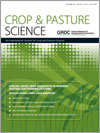BioOne.org will be down briefly for maintenance on 14 May 2025 between 18:00-22:00 Pacific Time US. We apologize for any inconvenience.
Issue 6 - Special Issue: Crop Sequences in Modern Australian Farming Systems
Articles (1)
REVIEW PAPER (1)
RESEARCH PAPERS (7)

No abstract available
